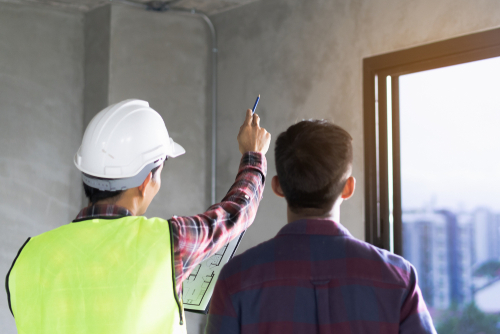Building inspection claims are becoming more commonplace, especially as the housing market is experiencing increased buy/sell activity. By nature, the property services sector is prone to litigation so it pays to ensure your inspection reporting is accurate and compliant. Read more about what we’ve learned about pre-purchase inspections claims throughout the years.
By following some basic rules, you can reduce your chances of having a claim arise from simple oversights or a lack of thoroughness.
Our top five building inspection tips
Keep in mind that even if you complete a perfect building inspection and report, it doesn’t necessarily mean that a customer won’t complain or try to lodge a claim against you.
It simply offers you more protection and a better chance of defending the claim.
That said, doing your job carefully and thoughtfully can save you a lot of stress and reduce your chances of having a claim brought against you.
Here are some steps to follow to help you avoid claims, complaints and disputes.
1. Get a pre-inspection agreement
It’s a condition of your insurance policy that you work to the appropriate Standard. AS4349 demands that you have a signed agreement in place with your customer before you do an inspection.
Making sure that you have a pre-inspection agreement in place can save you from claims further down the road. Why? It offers some protection by defining the scope and the limitations of your work.
This essentially defines what services you will be providing during the building inspection, outlines where the onus is on the customer, and warns the customer that you will not be inspecting for items like asbestos, for example. It should also outline that you won’t inspect areas that aren’t safely accessible or which need invasive action in order to conduct the inspection.
If you are a Rapid Solutions client, contact us to obtain a copy of our pre-inspection agreement template.
2. Report on accessibility and obstructions
The building inspection report is based only on visible, unobstructed, and accessible areas. So it’s important that your building inspection report notes any site-specific obstructions or accessibility issues.
As we mentioned above, the agreement would have already warned your customer that some areas may be inaccessible or obstructed for inspection. Your report should give them a “site specific” list of those areas.
If any area that you would usually inspect and report on is obstructed or inaccessible, it’s very important to clearly note this.
In the same vein, make sure to note all obstructions. This might include things like furniture, water tanks, fixed cupboards, and air conditioning units.

3. Cover a big enough area
When you’re completing a building inspection, how far away from the building do you need to inspect to cover yourself? For example, according to Australian Standards, on larger sites you should inspect 30m away from the main structure but within the property boundaries wherever possible.
Of course, this isn’t always going to be possible. Structures which are close together or which are inaccessible might pose a problem, for instance.
If you’re unable to inspect the wider area, this should be noted in your report.
4. Be detailed in your building inspection reporting
Make sure that your building inspection reporting is as thorough and detailed as possible.
Take plenty of photos, both close up and zoomed out, and include the relevant ones in your report. Photos should always have captions to describe what’s being shown. It’s best to use captioned photos that help your customer to understand your report finding, particularly if the defect or hazard is technical or difficult for you to describe to a layperson.
In your report, describe your recommendations clearly and consistently. Be detailed, and include time frames as well as specific steps you recommend the customer takes. In the case of a pre-purchase inspection report, a good time frame to give is “prior to contracts becoming binding”. Or, for serious defects or hazards, “should be addressed as a matter of urgency”.
Frequently, the allegation against your business will be that the inspector didn’t go far enough in identifying defects or making specific, detailed recommendation for follow up inspections.
If safety hazards, major defects or multiple minor defects are noted, it’s a good idea to follow up with your customer after sending the report, to ask if they have any questions about your recommendations or findings. This gives you an added opportunity to clarify the key aspects of your report.
Rapid Inspect can help you to compile a detailed and accurate report which complies with Australian Standards. Read our Tips for Making Report Recommendations article for more detailed guidelines.
5. Keep your insurer informed if any building inspection claims arise
If a claim is brought against you, it’s always best to notify your insurer immediately. In fact, it’s a condition of your policy.
Let your insurer know, and then respond to your customer politely and punctually, without admitting liability. Your insurer will take things from there, guiding you through the next steps.
Ensure you have adequate cover for building inspections
In the event a claim is brought against you, you’ll want your insurance to protect you. As specialists in the industry, Rapid Solutions offer insurance specific to the property services sector, and can make sure that you’re properly covered.
Building inspections commonly have their own policy endorsement, with additional conditions of cover. These might include a requirement to refer structures such as timber decks to an engineer, or specific requirements if masonry cracking is evident at the property. If you’re not sure if your insurer has special requirements for building inspections, contact them to check.
Browse our professional indemnity insurance offering and our general liability insurance offering, or perhaps you’re looking for business vehicle insurance and other business insurances. Alternatively, contact us to find out more.

